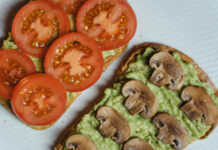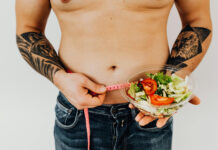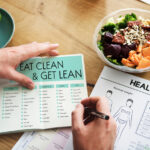Introduction to Healthy Eating for Weight Loss
Let’s be honest: most of us are looking for that magic trick when it comes to weight loss. But here’s the hard truth—no magic pill or secret workout routine can outdo a poor diet. What you eat daily plays a far bigger role in losing weight than how many hours you spend at the gym.
So, where do we start? The answer: Real, whole foods.
Understanding the Basics of Weight Loss
Calories In vs Calories Out
This is the golden rule of weight loss. To shed fat, you must consume more calories than you take in. It’s not about starving; it’s about balance. Create a calorie deficit—just enough to lose weight without feeling like a zombie.
Macronutrients Matter
Protein
Protein isn’t just for bodybuilders. It’s your best friend when you’re trying to lose weight. Why? Because it keeps you full, helps retain muscle mass, and revs up your metabolism.
Carbs
Carbs aren’t evil, despite what you’ve heard. Focus on complex carbs like oats, quinoa, and sweet potatoes. They digest slowly and keep your blood sugar stable.
Fats
Yes, fat can help you lose fat. Healthy fats like those from avocados, nuts, seeds, and olive oil help curb cravings and support hormone balance.
The Psychology Behind Eating
Emotional vs Physical Hunger
Ever found yourself elbow-deep in a bag of chips because you’re bored or stressed? That’s emotional hunger. Learn to identify the difference between real hunger and emotional eating.
Mindful Eating Habits
Slow down, chew your food, and actually enjoy it. When you eat mindfully, you eat less and feel more satisfied. Sounds simple, but it works like a charm.
How to Start Eating Healthy
Pantry Makeover
Say goodbye to packaged junk. Stock up on healthy staples like oats, lentils, whole grains, herbs, nuts, and olive oil. When healthy options are all you have, guess what you’ll eat?
Grocery List for Weight Loss
- Leafy greens
- Berries
- Chicken breast
- Eggs
- Greek yogurt
- Whole grain bread
- Brown rice
- Cottage cheese
- Almonds
Meal Planning and Prep
Importance of Planning
Failing to plan is planning to fail. Set aside a couple of hours on Sunday to prep meals for the week. This keeps you from reaching for takeout.
Easy Meal Prep Ideas
- Grilled chicken with roasted veggies
- Quinoa salad with chickpeas
- Overnight oats with berries
- Stir-fried tofu and brown rice
Best Foods for Weight Loss
Lean Proteins
Chicken, turkey, fish, tofu, and eggs are protein-packed and low in calories.
High-Fiber Veggies
Veggies like broccoli, cauliflower, spinach, and carrots keep you full and satisfied.
Whole Grains
Oats, brown rice, and whole wheat bread offer sustained energy throughout the day.
Healthy Fats
Think avocados, nuts, seeds, and olive oil. They help absorb nutrients and fight cravings.
Foods to Avoid or Limit
Refined Carbs
White bread, pastries, and most breakfast cereals are stripped of nutrients.
Sugary Beverages
Soda, flavored lattes, and even fruit juices can sabotage your calorie intake.
Processed Junk Foods
Chips, cookies, and ready-to-eat meals are often loaded with sodium, sugar, and trans fats.
Healthy Snacking Tips
Snack Smart, Not Hard
Go for options like:
- A handful of almonds
- Greek yogurt
- Boiled eggs
- Apple slices with peanut butter
Portion Control Hacks
Use smaller plates, portion snacks in bags, and avoid eating straight from the package.
Hydration and Its Role in Weight Loss
Water is essential. Often, when you feel hungry, you’re actually just dehydrated. Aim for 2–3 liters per day, more if you’re active. Skip sugary drinks and go for infused water with lemon or cucumber.
Eating Out Without Guilt
Smart Menu Choices
Look for grilled, baked, or steamed options. Ask for dressings and sauces on the side.
Watch Your Portions
Restaurant servings are huge. Don’t hesitate to split meals or pack leftovers.
Dealing with Cravings
Why We Crave Junk
Cravings often come from habit, hormones, or nutrient deficiencies.
Healthy Swaps
- Chips → air-popped popcorn
- Ice cream → Greek yogurt with berries
- Soda → sparkling water with lime
Intermittent Fasting & Meal Timing
Intermittent fasting (like 16:8) can be effective. It limits your eating window, helping you naturally eat fewer calories. But it’s not for everyone—listen to your body.
Supplements – Are They Necessary?
Most people don’t need fat burners or detox teas. A basic multivitamin, omega-3, and maybe protein powder is plenty. Focus on food first.
Tracking Progress Beyond the Scale
The scale lies—sometimes. Track inches, how your clothes fit, energy levels, and progress photos. These tell the real story.
Long-Term Success Tips
- Don’t aim for perfection—aim for progress.
- Build habits, not restrictions.
- Make it sustainable and enjoyable.
- Celebrate small wins.
- Remember: this is a lifestyle, not a 30-day challenge.
Conclusion
Healthy eating for weight loss isn’t about strict diets or going hungry. It’s about fueling your body with the right foods, building smart habits, and staying consistent. Start small, stay steady, and celebrate every bit of progress. Remember, you’re not just losing weight—you’re gaining health, energy, and confidence.
FAQs
1. How fast can I lose weight with healthy eating?
A safe and sustainable rate is 1–2 pounds per week. Faster weight loss often leads to regaining it later.
2. Do I need to cut out all carbs to lose weight?
No! Just choose complex carbs like oats, brown rice, and whole grain bread over refined ones.
3. Can I still eat my favorite foods?
Absolutely. Balance and moderation are key. It’s okay to enjoy treats occasionally.
4. What should I eat before and after workouts?
Before: A banana or oatmeal.
After: A protein shake or chicken with veggies to aid recovery.
5. How do I stay motivated on tough days?
Focus on your “why,” track your progress, and surround yourself with supportive people or online communities.























